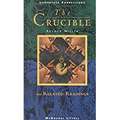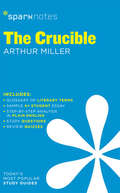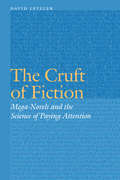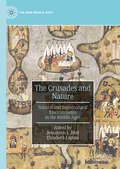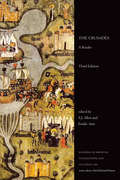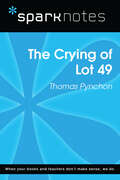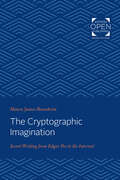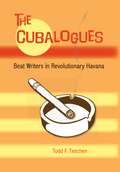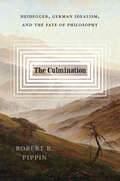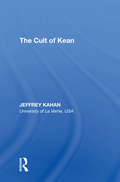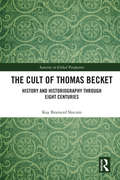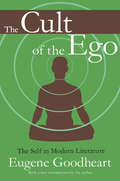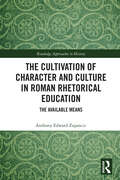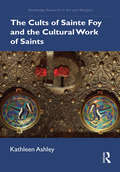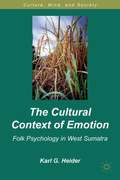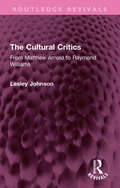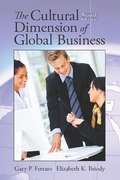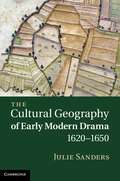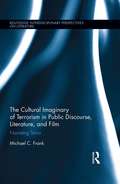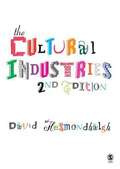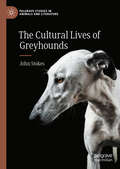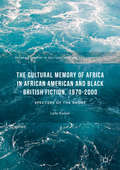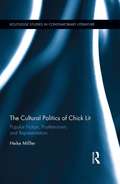- Table View
- List View
The Crucible
by McDougal-Littell Publishing StaffA textbook reader for young adults features Arthur Miller's "The Crucible," plus short stories, poems, and essays designed to build reading comprehension.
The Crucible SparkNotes Literature Guide (SparkNotes Literature Guide Series #24)
by SparkNotesThe Crucible SparkNotes Literature Guide by Arthur Miller Making the reading experience fun! When a paper is due, and dreaded exams loom, here's the lit-crit help students need to succeed! SparkNotes Literature Guides make studying smarter, better, and faster. They provide chapter-by-chapter analysis; explanations of key themes, motifs, and symbols; a review quiz; and essay topics. Lively and accessible, SparkNotes is perfect for late-night studying and paper writing. Includes:An A+ Essay—an actual literary essay written about the Spark-ed book—to show students how a paper should be written.16 pages devoted to writing a literary essay including: a glossary of literary termsStep-by-step tutoring on how to write a literary essayA feature on how not to plagiarize
The Crucible of Language
by Vyvyan EvansFrom the barbed, childish taunt on the school playground, to the eloquent sophistry of a lawyer prising open a legal loophole in a court of law, meaning arises each time we use language to communicate with one another. How we use language - to convey ideas, make requests, ask a favour, and express anger, love or dismay - is of the utmost importance; indeed, linguistic meaning can be a matter of life and death. In The Crucible of Language, Vyvyan Evans explains what we know, and what we do, when we communicate using language; he shows how linguistic meaning arises, where it comes from, and the way language enables us to convey the meanings that can move us to tears, bore us to death, or make us dizzy with delight. Meaning is, he argues, one of the final frontiers in the mapping of the human mind.
The Cruft of Fiction: Mega-Novels and the Science of Paying Attention (Frontiers of Narrative)
by David LetzlerA 2017 Choice Outstanding Academic Title What is the strange appeal of big books? The mega-novel, a genre of erudite tomes with encyclopedic scope, has attracted wildly varied responses, from fanatical devotion to trenchant criticism. Looking at intimidating mega-novel masterpieces from The Making of Americans to 2666, David Letzler explores reader responses to all the seemingly random, irrelevant, pointless, and derailing elements that comprise these mega-novels, elements that he labels “cruft” after the computer science term for junk code. In The Cruft of Fiction, Letzler suggests that these books are useful tools to help us understand the relationship between reading and attention.While mega-novel text is often intricately meaningful or experimental, sometimes it is just excessive and pointless. On the other hand, mega-novels also contain text that, though appearing to be cruft, turns out to be quite important. Letzler posits that this cruft requires readers to develop a sophisticated method of attentional modulation, allowing one to subtly distinguish between text requiring focused attention and text that must be skimmed or even skipped to avoid processing failures. The Cruft of Fiction shows how the attentional maturation prompted by reading mega-novels can help manage the information overload that increasingly characterizes contemporary life.
The Crusades and Nature: Natural and Supernatural Environments in the Middle Ages (The New Middle Ages)
by Elizabeth Lapina Jessalynn L. BirdThe Crusades and Nature: Natural and Supernatural Environments in the Middle Ages explores the intersection of crusader studies and studies of nature. The volume addresses encounters with, responses to and representations of a broad variety of phenomena: celestial objects and events; familiar and unfamiliar fauna and flora; seascapes and landscapes; the elements and the seasons; etc. It introduces readers to crusaders’ actual, but also largely or entirely imaginary encounters with natural phenomena, as well as literary references to nature in crusader sources more generally (such as, for example, animal metaphors). Finally, this project investigates the relationships between the natural and the supernatural and between nature and human-made environments. The volume will define “crusades” broadly, to include not only crusades to the East, but also crusades to frontier regions such as the Baltic and Iberian peninsula and extends to representations of crusades and nature in later medieval and early modern sources.
The Crusades: A Reader, Third Edition (Readings in Medieval Civilizations and Cultures #VIII)
by Emilie Amt S. J. AllenSince its first appearance in 2004, The Crusades: A Reader has been the go-to sourcebook in the field. S.J. Allen and Emilie Amt cover the entire crusading movement, from its origins to its modern afterlife, using key primary source documents. The third edition features a new introduction that includes a guide for students on how to use the book. The editors have also added more content on women, material culture, Jewish and Byzantine perspectives, Muslim-Crusader interactions, and modern use of Crusade imagery and rhetoric by the Far Right. The geographic range is broad, covering not only Crusades in the Middle East, but also in Spain and in northern Europe and against European heretics. While scholarship, courses, and textbooks on the Crusades have proliferated over the past twenty years, The Crusades: A Reader remains the only comprehensive, up-to-date, and in-print sourcebook available on the subject.
The Crying of Lot 49 (SparkNotes Literature Guide Series)
by SparkNotesThe Crying of Lot 49 (SparkNotes Literature Guide) by Thomas Pynchon Making the reading experience fun! Created by Harvard students for students everywhere, SparkNotes is a new breed of study guide: smarter, better, faster.Geared to what today's students need to know, SparkNotes provides:chapter-by-chapter analysis explanations of key themes, motifs, and symbols a review quiz and essay topics Lively and accessible, these guides are perfect for late-night studying and writing papers.
The Cryptographic Imagination: Secret Writing from Edgar Poe to the Internet (Parallax: Re-visions of Culture and Society)
by Shawn James RosenheimOriginally published in 1996. In The Cryptographic Imagination, Shawn Rosenheim uses the writings of Edgar Allan Poe to pose a set of questions pertaining to literary genre, cultural modernity, and technology. Rosenheim argues that Poe's cryptographic writing—his essays on cryptography and the short stories that grew out of them—requires that we rethink the relation of poststructural criticism to Poe's texts and, more generally, reconsider the relation of literature to communication. Cryptography serves not only as a template for the language, character, and themes of much of Poe's late fiction (including his creation, the detective story) but also as a "secret history" of literary modernity itself. "Both postwar fiction and literary criticism," the author writes, "are deeply indebted to the rise of cryptography in World War II." Still more surprising, in Rosenheim's view, Poe is not merely a source for such literary instances of cryptography as the codes in Conan Doyle's "The Dancing-Men" or in Jules Verne, but, through his effect on real cryptographers, Poe's writing influenced the outcome of World War II and the development of the Cold War. However unlikely such ideas sound, The Cryptographic Imagination offers compelling evidence that Poe's cryptographic writing clarifies one important avenue by which the twentieth century called itself into being. "The strength of Rosenheim's work extends to a revisionistic understanding of the entirety of literary history (as a repression of cryptography) and then, in a breathtaking shift of register, interlinks Poe's exercises in cryptography with the hyperreality of the CIA, the Cold War, and the Internet. What enables this extensive range of applications is the stipulated tension Rosenheim discerns in the relationship between the forms of the literary imagination and the condition of its mode of production. Cryptography, in this account, names the technology of literary production—the diacritical relationship between decoding and encoding—that the literary imagination dissimulates as hieroglyphics—the hermeneutic relationship between a sign and its content."—Donald E. Pease, Dartmouth College
The Cubalogues: Beat Writers in Revolutionary Havana
by Todd TietchenImmediately after the Cuban Revolution, Havana fostered an important transnational intellectual and cultural scene. Later, Castro would strictly impose his vision of Cuban culture on the populace and the United States would bar its citizens from traveling to the island, but for these few fleeting years the Cuban capital was steeped in many liberal and revolutionary ideologies and influences.Some of the most prominent figures in the Beat Movement, including Allen Ginsberg, Lawrence Ferlinghetti, and Amiri Baraka, were attracted to the new Cuba as a place where people would be racially equal, sexually free, and politically enfranchised. What they experienced had resounding and lasting literary effects both on their work and on the many writers and artists they encountered and fostered.Todd Tietchen clearly documents the multiple ways in which the Beats engaged with the scene in Havana. He also demonstrates that even in these early years the Beat movement expounded a diverse but identifiable politics.
The Culmination: Heidegger, German Idealism, and the Fate of Philosophy
by Robert B. PippinA provocative reassessment of Heidegger’s critique of German Idealism from one of the tradition’s foremost interpreters. Heidegger claimed that Western philosophy ended—failed, even—in the German Idealist tradition. In The Culmination, Robert B. Pippin explores the ramifications of this charge through a masterful survey of Western philosophy, especially Heidegger’s critiques of Hegel and Kant. Pippin argues that Heidegger’s basic concern was to determine sources of meaning for human life, particularly those that had been obscured by Western philosophy’s attention to reason. The Culmination offers a new interpretation of Heidegger, German Idealism, and the fate of Western rationalism.
The Culmination: Heidegger, German Idealism, and the Fate of Philosophy
by Robert B. PippinA provocative reassessment of Heidegger’s critique of German Idealism from one of the tradition’s foremost interpreters. Heidegger claimed that Western philosophy ended—failed, even—in the German Idealist tradition. In The Culmination, Robert B. Pippin explores the ramifications of this charge through a masterful survey of Western philosophy, especially Heidegger’s critiques of Hegel and Kant. Pippin argues that Heidegger’s basic concern was to determine sources of meaning for human life, particularly those that had been obscured by Western philosophy’s attention to reason. The Culmination offers a new interpretation of Heidegger, German Idealism, and the fate of Western rationalism.
The Cult of Kean
by Jeffrey KahanA Shakespearean actor who made his career on the public stage, whose sex life was known and discussed in Britain, America and France, Edmund Kean has inspired numerous writings, many biographies among them. But until now, no work has tackled the complicated and fascinating story of his literary appropriation, both in his own day and after his death. Dealing with the way a variety of canonical authors-including Byron, Coleridge, Keats, Dumas, Twain and Sartre-appropriated Kean through the centuries, The Cult of Kean traces a remarkable literary legacy. In each chapter Jeffrey Kahan discusses how many of history's greatest figures viewed Kean, and how these figures examined and discussed themselves in relation to-or projected themselves onto-a variety of constructions of the great actor. Kahan first explores the rise of Kean in light of rising democratic sympathies, then in light of Kean's equally autocratic dealings with playwrights, among them John Keats. He looks at Kean's sexual shenanigans at Drury Lane, exploring them in the wider social context of infidelity; and explores perceptions of Kean in America, during his 1820-1 and 1825-6 tours. The Cult of Kean cites many letters from Kean's mother and still others from his wife, none of which have been published previously. The study also features rare and interesting paintings of Kean, as well as depictions of how writers, actors and film makers continue to add to his remarkable literary legacy.
The Cult of Thomas Becket: History and Historiography through Eight Centuries (Sanctity in Global Perspective)
by Kay Brainerd SlocumOn 29 December, 1170, Thomas Becket, Archbishop of Canterbury, was brutally murdered in his own cathedral. News of the event was rapidly disseminated throughout Europe, generating a widespread cult which endured until the reign of Henry VIII in the sixteenth century, and engendering a fascination which has lasted until the present day. The Cult of Thomas Becket: History and Historiography through Eight Centuries contributes to the lengthy debate surrounding the saint by providing a historiographical analysis of the major themes in Becket scholarship, tracing the development of Becket studies from the writings of the twelfth-century biographers to those of scholars of the twenty-first century. The book offers a thorough commentary and analysis which demonstrates how the Canterbury martyr was viewed by writers of previous generations as well as our own, showing how they were influenced by the intellectual trends and political concerns of their eras, and indicating how perceptions of Thomas Becket have changed over time. In addition, several chapters are devoted a discussion of artworks in various media devoted to the saint, as well as liturgies and sermons composed in his honor. Combining a wide historical scope with detailed textual analysis, this book will be of great interest to scholars of medieval religious history, art history, liturgy, sanctity and hagiography.
The Cult of the Ego: The Self in Modern Literature
by Eugene GoodheartGoethe once remarked that "every emancipation of the spirit is pernicious unless there is a corresponding growth of control." This remark may be taken as a motto for Eugene Goodheart's study of an aspect of the cultural history of the past two hundred years. In separate chapters on Rousseau, Stendhal, Goethe and Carlyle, Dostoevsky, Whitman, Lawrence, and Joyce, Goodheart discovers a community of concern which he calls the cult of the ego. All these writers examined here in one way or another deal with "the emancipation of the spirit" with all its promise and danger. The characteristic attempt is to "extend the boundaries of the self by going beyond the area of safety" and. thereby risking even the destruction of the self. They advance the claims of the self at the same time seeking the controls that will secure these claims. The artist-hero becomes the central figure in Goodheart's volume, since it is he who comes to exemplify the possibilities of the cult of the ego. Their efforts, Goodheart argues, have ambiguous results. The seeds of contemporary nihilism are in the failures of these writers to master the chaos of egoism, which they helped engender. But their heroism was partly in the effort of resistance: moral, religious, aesthetic. In a large portion of modern literature, resistance has been abandoned either out of exhaustion or out of fascination with the destructive tendency of modern life: in Beckett's phrase, "a world endlessly collapsing." In his introduction to this first paperback edition, Goodheart discusses the book's origin in relation to the counter-cultural unrest of 1968 when it was first published and weighs its theme of the emancipated self against current postmodern assertions of the "death of the author." The Cult of the Ego is written with admirable clarity and economy. Its interests are literary, moral and political. Moving freely and knowledgeably among various national literatures, Goodheart has made an original and valuable contribution to the field of comparative literature. Eugene Goodheart is Edytha Macy Gross Professor of Humanities Emeritus at Brandeis University. Among his books are Novel Practices: Classic Modern Fiction, Modernism and the Critical Spirit, Culture and the Radical Conscience, and Confessions of a Secular Jew: A Memoir, all available from Transaction.
The Cultivation of Character and Culture in Roman Rhetorical Education: The Available Means (Routledge Approaches to History)
by Anthony Edward ZupancicAt its very center, The Cultivation of Character and Culture in Roman Rhetorical Education: The Available Means is a study of the subtle, organic ways that rhetoric can work to cultivate a particular character. This is an extension of the current work in composition studies, which focus on the ways that writing instruction contributes to the development of individual power and agency in students, combined with an ancient understanding of the ways that students learned to act within a particular, accepted cultural framework. It recognizes and reclaims a lost dimension of rhetoric, a dimension that is conceptually linked to the martial culture of the ancient world, to show how ancient rhetorical theory framed the discipline as an education in thinking, speaking, and acting in ways that were necessary to be both a persuasive speaker and an effective leader. Through close readings and analysis of particular rhetorical exercises, the book shows how rhetorical education shaped characters that were appropriate in the eyes of the dominant culture but were also capable of working independently to progressively alter that culture. In showing the ways that rhetorical education shaped a particular character, the book demonstrates the ways that the combination character, culture, and virtue are vital to leadership in any time.
The Cults of Sainte Foy and the Cultural Work of Saints (Routledge Research in Art and Religion)
by Kathleen AshleyBringing together artifacts, texts, and practices within an interpretive framework that stresses the cultural work performed by saints, Kathleen Ashley presents a comparative study of the cults of the medieval Sainte Foy at a number of the sites where she was especially venerated. This book analyzes how each cult site produced the saint it needed, appropriating or creating whatever was required to that end. Ashley’s approach is thoroughly interdisciplinary, incorporating visual, religious, medieval, and women’s and gender studies as well as literary studies and social history. She uses the theoretical framework of "cultural work" to analyze how the cult of Sainte Foy was sponsored and received by specific groups in different locales in Europe. The book is comprehensive in terms of historical as well as geographical range, tracing the history of the cult from the early Middle Ages into the present day. It also includes historiographical analysis, examining the way the cults of Sainte Foy have been represented in various historical accounts. Ashley’s narrative challenges the boundary between "elite" and "popular" culture and complicates the traditional vernacular vs. Latin language binary. A chief aim of the study is to show how "art" objects always operated in conjunction with other cultural texts to construct a saint’s cult. The volume is heavily illustrated, showing artifacts such as stained-glass windows and wall paintings which are not readily available from any other source. This book will be of special interest to scholars in art history, medieval history, gender studies, and religion.
The Cultural Context of Emotion
by Karl G. HeiderBased on the author's second stage of research on emotions of the matrilineal Moslem Minangkabau of West Sumatra, Indonesia, this book is a continuation of Heider's groundbreaking 1991 book, Landscapes of Emotion . This work demonstrates how situating emotion at the center of an investigation is a powerful ethnographic tool.
The Cultural Critics: From Matthew Arnold to Raymond Williams (Routledge Revivals)
by Lesley JohnsonOriginally published in 1979, the central focus of this study is the concept of culture as employed by English literary intellectuals over the preceding 100 years, a period characterized by a constant process of re-definition and change. The tradition of criticism in which these intellectuals wrote represented the artistic imagination as a moral force in society and a fundamental mechanism for social change. The author traces this tradition through the writings of various English intellectuals, using the three main figures of Matthew Arnold, F. R. Leavis and Raymond Williams to elucidate the concept. She shows, through the writings of their contemporaries, how the concept was employed and modified, and her analysis ranges from J. S. Mill, John Ruskin and William Morris, through George Bernard Shaw, D. H. Lawrence, T. S. Eliot and R. H. Tawney to Richard Hoggard, Richard Wollheim and R. S. Peters. By discussing the questions of the role of art in society and examining their treatment by different groups of intellectuals, the author has supplied a basis for a forceful critique of the quality of life in modern industrial society. This book will be of interest to students of literature, cultural history and the sociology of culture.
The Cultural Dimension of Global Business 7th Edition
by Gary P. Ferraro Elizabeth K. BriodyThe Cultural Dimension of Global Business provides a foundation for understanding the impact of culture on global business and global business on culture.
The Cultural Geography of Early Modern Drama, 1620–1650
by Julie SandersLiterary geographies is an exciting new area of interdisciplinary research. Innovative and engaging, this book applies theories of landscape, space and place from the discipline of cultural geography within an early modern historical context. Different kinds of drama and performance are analysed: from commercial drama by key playwrights to household masques and entertainment performed by families and in semi-official contexts. Sanders provides a fresh look at works from the careers of Ben Jonson, John Milton and Richard Brome, paying attention to geographical spaces and habitats like forests, coastlines and arctic landscapes of ice and snow, as well as the more familiar locales of early modern country estates and city streets and spaces. Overall, the book encourages readers to think about geography as kinetic, embodied and physical, not least in its literary configurations, presenting a key contribution to early modern scholarship.
The Cultural Imaginary of Terrorism in Public Discourse, Literature, and Film: Narrating Terror (Routledge Interdisciplinary Perspectives on Literature)
by Michael C. FrankThis study investigates the overlaps between political discourse and literary and cinematic fiction, arguing that both are informed by, and contribute to, the cultural imaginary of terrorism. Whenever mass-mediated acts of terrorism occur, they tend to trigger a proliferation of threat scenarios not only in the realm of literature and film but also in the statements of policymakers, security experts, and journalists. In the process, the discursive boundary between the factual and the speculative can become difficult to discern. To elucidate this phenomenon, this book proposes that terror is a halfway house between the real and the imaginary. For what characterizes terrorism is less the single act of violence than it is the fact that this act is perceived to be the beginning, or part, of a potential series, and that further acts are expected to occur. As turn-of-the-century writers such as Stevenson and Conrad were the first to point out, this gives terror a fantastical dimension, a fact reinforced by the clandestine nature of both terrorist and counter-terrorist operations. Supported by contextual readings of selected texts and films from The Dynamiter and The Secret Agent through late-Victorian science fiction to post-9/11 novels and cinema, this study explores the complex interplay between actual incidents of political violence, the surrounding discourse, and fictional engagement with the issue to show how terrorism becomes an object of fantasy. Drawing on research from a variety of disciplines, The Cultural Imaginary of Terrorism will be a valuable resource for those with interests in the areas of Literature and Film, Terrorism Studies, Peace and Conflict Studies, Trauma Studies, and Cultural Studies.
The Cultural Industries
by David Hesmondhalgh'The first edition of The Cultural Industries moved us irrevocably past the tired debates between political economy and cultural studies approaches. This second edition takes on new and vital targets, for example claims that the Internet is replacing television in everyday media consumption. . . . In the process, Hesmondhalgh provides us with an essential toolkit for making critical sense of the digital media age, and our places within it' - Nick Couldry, Goldsmiths College, University Of London 'This book sets a valuable standard for communication studies. Hesmondhalgh integrates cultural research with political economy, organizational sociology with public communication policy studies, global with comparative analysis, and intellectual property law with technology changes. I've successfully taught graduate and undergraduate courses in the USA and France using the first edition, and this one is better still' - John D. H. Downing, Global Media Research Centre, Southern Illinois University Praise for the first edition: 'This lucid, careful and sophisticated book orders the entire field, for the US as well as Europe, and at one stroke becomes the state of the art, the standard' - Todd Gitlin, Columbia University, USA This book is a powerful antidote to journalistic hype about change in the cultural industries. Significantly expanding, updating and revising an acclaimed first edition published in 2002, it · analyses how, why and in what ways cultural production has changed since the 1980s · guides the reader through existing approaches · scrutinises facts and debates about the role of culture and creativity in modern societies · provides new material on copyright, cultural policy, celebrity power, the digital distribution of music and many other issues Like its predecessor, this exciting new edition of The Cultural Industries places transformation in the cultural industries in long-term political, economic and cultural context. In doing so, Hesmondhalgh offers a distinctive critical approach to cultural production, drawing on political economy perspectives, but also on cultural studies, sociology and social theory.
The Cultural Lives of Greyhounds (Palgrave Studies in Animals and Literature)
by John StokesThis book aims to enhance our intellectual understanding of the relationship between human beings and domestic animals, with a focus on a specific breed of dog: the greyhound. It combines literary criticism, cultural history and the rapidly expanding field of human/animal studies by tracing the creative representation of the greyhound, from the earliest references in classical myth to multiple appearances in contemporary literature, performance and the fine arts. Each representation—whether of hunter or racer, of pet or predator—is treated not simply as a stage in some inevitable humanitarian progression but as part of a series of co-evolutionary exchanges between humans and their canine collaborators that together constitute a shared experience. Writers who have been fascinated by greyhounds range from Shakespeare to Dryden, from William Wordsworth to George Meredith, from Marcel Proust to Colette, from William Butler Yeats to Ted Hughes and beyond. The haunting image of the breed has inspired artists such as Dürer, Hogarth and Giacometti.
The Cultural Memory of Africa in African American and Black British Fiction, 1970-2000
by Leila KamaliThis book offers a new approach to reading the cultural memory of Africa in African American fiction from the post-Civil Rights era and in Black British fiction emerging in the wake of Thatcherism. The critical period between the decline of the Civil Rights Movement and the dawn of the twenty-first century saw a deep contrast in the distinctive narrative approaches displayed by diverse African diaspora literatures in negotiating the crisis of representing the past. Through a series of close readings of literary fiction, this work examines how the cultural memory of Africa is employed in diverse and specific negotiations of narrative time, in order to engage and shape contemporary identity and citizenship. By addressing the practice of "remembering" Africa, the book argues for the signal importance of the African diaspora's literary interventions, and locates new paradigms for cultural identity in contemporary times.
The Cultural Politics of Chick Lit: Popular Fiction, Postfeminism and Representation (Routledge Studies in Contemporary Literature)
by Heike MisslerChick lit is the marketing label attributed to a surge of books published in the wake of Helen Fielding's Bridget Jones's Diary (1996) and Candace Bushnell's Sex and the City (1997). Branded by their pink or pastel-coloured book covers, chick-lit novels have been a highly successful and ubiquitous product of women's popular culture since the late 1990s. This study traces the evolution of chick lit not only as a genre of popular fiction, but as a cultural phenomenon. It complicates the genealogy of the texts by situating them firmly in the context of age-old debates about female literary creation, and by highlighting the dynamics of the popular-fiction market. Offering a convincing dissection of the formula which lies at the heart of chick lit, as well as in-depth analyses of a number of chick-lit titles ranging from classic to more recent and edgier texts, this book yields new insights into a relatively young field of academic study. Its close readings provide astute assessments of chick lit's notoriously skewed representational politics, especially with regard to sexuality and ethnicity, which feed into current discussions about postfeminism. Moreover, the study makes a unique contribution to the scholarly debate of chick lit by including an analysis of the (online) fan communities the genre has fostered. The Cultural Politics of Chick Lit weaves a sound methodological network, drawing on reader-response criticism; feminist, gender, and queer theory; affect studies; and whiteness studies. This book is an accessible and engaging study for anyone interested in postfeminism and popular culture.
